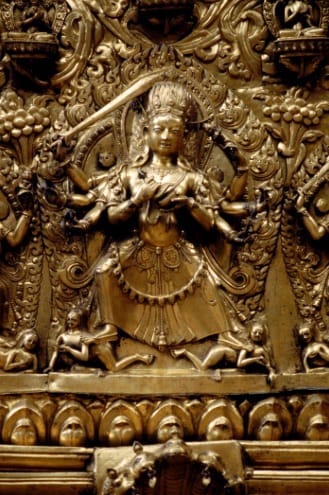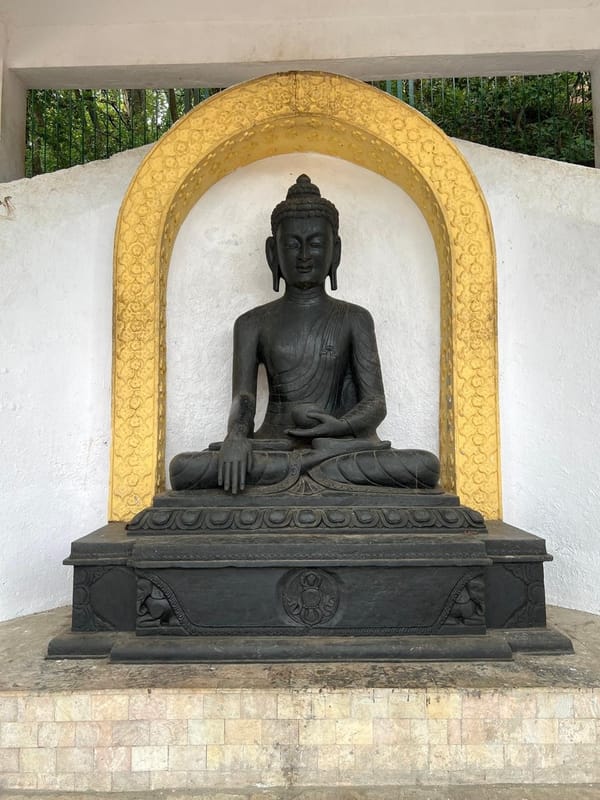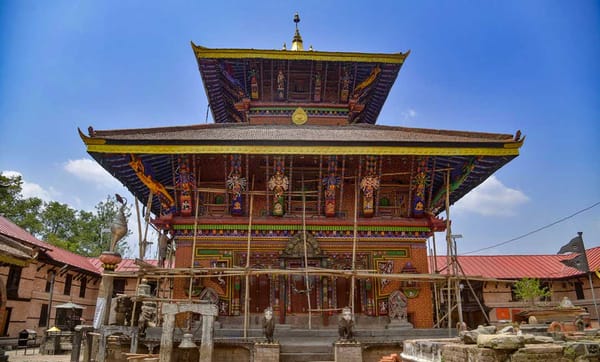🕉️ The Timeless Art of Nepalese Sculptures (Murtikala): A Journey Through History

Introduction
Nepal, a land of temples, mountains, and mythology, also holds one of the world’s richest traditions of sacred sculpture, known locally as Murtikala. These ancient and modern sculptures—crafted from stone, wood, and bronze—embody the divine essence of both Hindu and Buddhist deities, deeply rooted in Nepal's spiritual identity.
In this blog post, we’ll explore the history of Nepalese sculptures, the styles and periods that defined them, and how they continue to inspire generations today.
🕰️ 1. Ancient Origins: Lichchhavi Period (ca. 4th–9th Century)
Nepali sculpture finds its early roots in the Lichchhavi dynasty, whose kings were influenced by Indian Gupta art. Sculptures from this time are characterized by grace, balance, and religious symbolism.
Notable Works:
- Vishnu Vikrant (Baman Tribikram) – Lazimpat, Kathmandu
- Gajalakshmi Stele – 6th century
- Seated Buddha statues – in stone with stylized robes and mudras
🧭 Tip: Visit the Changu Narayan Temple to view some of the oldest known sculptures in Nepal.
🛕 2. Golden Era: Malla Period (12th–18th Century)
The Malla dynasty ushered in the golden age of Nepali sculpture, especially in the Kathmandu Valley. This period saw a rise in Tantric iconography, metalwork excellence, and the artistic dominance of Newar artisans.

Key Features:
- Bronze and gilt copper statues made using the lost-wax technique
- Complex multi-armed deities (e.g., Vajrayogini, Manjushri, Shiva-Parvati)
- Temple decorations with toranas, struts, and door guardians
🎨 Explore more masterpieces at the Patan Museum and Bhaktapur Durbar Square.
🔱 3. A Fusion of Faith: Hindu-Buddhist Sculpture
A unique feature of Nepalese Murtikala is its fusion of Hindu and Buddhist elements. Many sculptures reflect a peaceful coexistence—Bodhisattvas with Shaivite symbols, or tantric goddesses revered in both traditions.
📍 Example: Swayambhunath Stupa features both Buddhist stupas and Hindu statues.
🔨 4. Modern Trends and Cultural Revival
During the 19th and early 20th centuries, traditional Murtikala faced decline due to colonial influence and modernization. But today, Newar artists are leading a revival:
- Maintaining ancient techniques passed down through generations
- Creating sacred art for temples, galleries, and global collectors
- Experimenting with contemporary styles and themes
🛒 Support artisan-made sacred art through our Ethical Handicrafts Marketplace.
🌏 Where to See & Learn More
- Patan Museum, Lalitpur
- National Museum of Nepal, Chhauni
- Hanuman Dhoka Museum, Kathmandu Durbar Square
- Boudhanath and Swayambhunath, Kathmandu
📚 Recommended Reads:
- "The Art and Architecture of Nepal" – by Ulrich von Schroeder
- "Nepalese Art: Past and Present" – by Dina Bangdel
📌 Conclusion
The journey of Nepalese sculpture (Murtikala) is not just about art—it's about the sacred, the divine, and the enduring link between creativity and spirituality. Whether you’re walking through an ancient temple or visiting a modern museum, every sculpture tells a story of devotion and identity.
Nepal’s Murtikala continues to thrive, echoing its deep spiritual roots and welcoming a new generation of admirers from around the world.
💌 Send Love to Nepal from Anywhere
No matter where you are in the world,
surprise your loved ones in Nepal with homemade pickles, heartfelt gifts, and memories that taste like home.
🎁 Order now at Gharpugchha.com — we deliver across Nepal.

